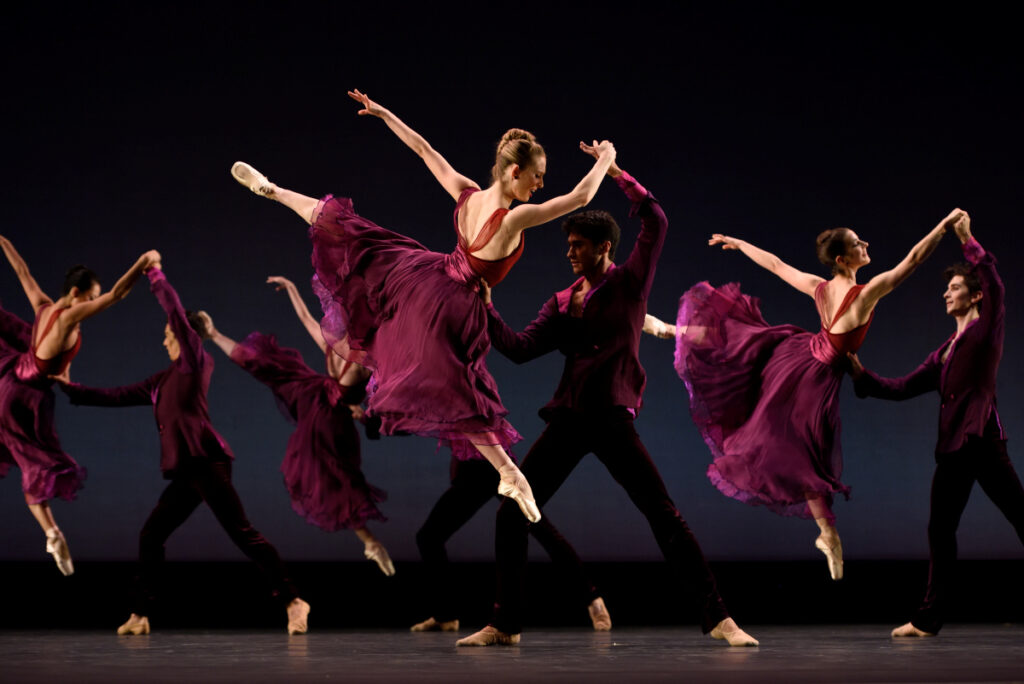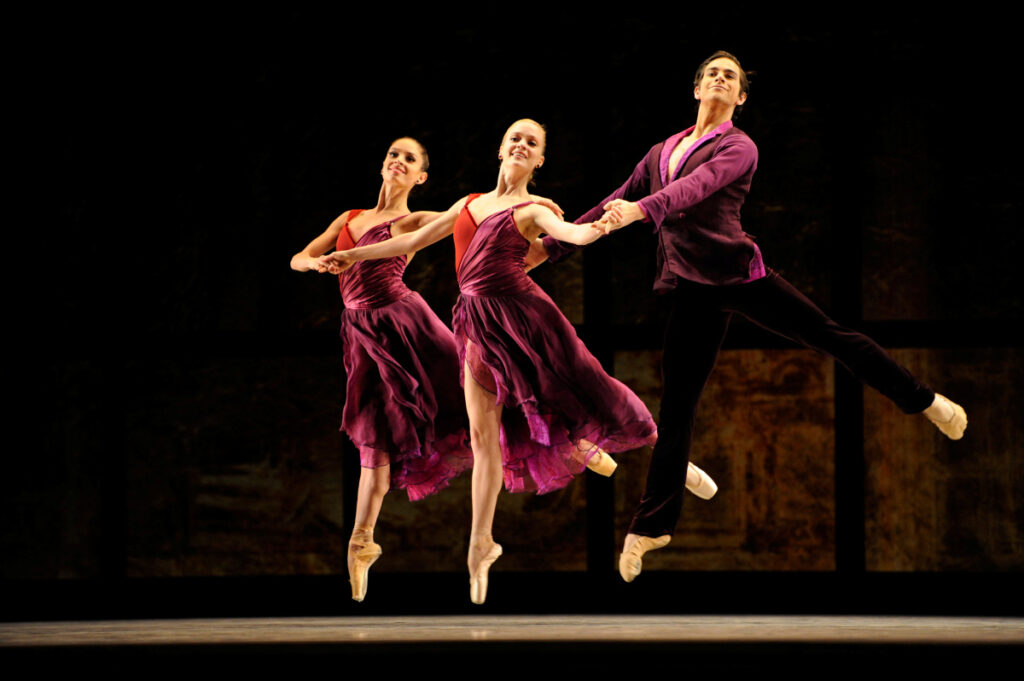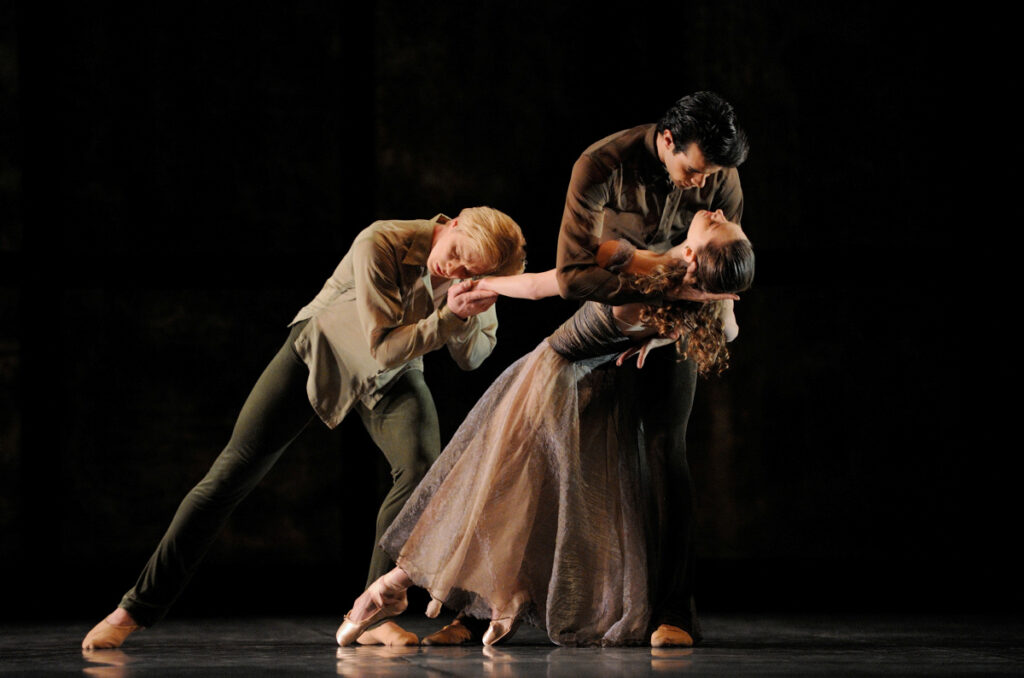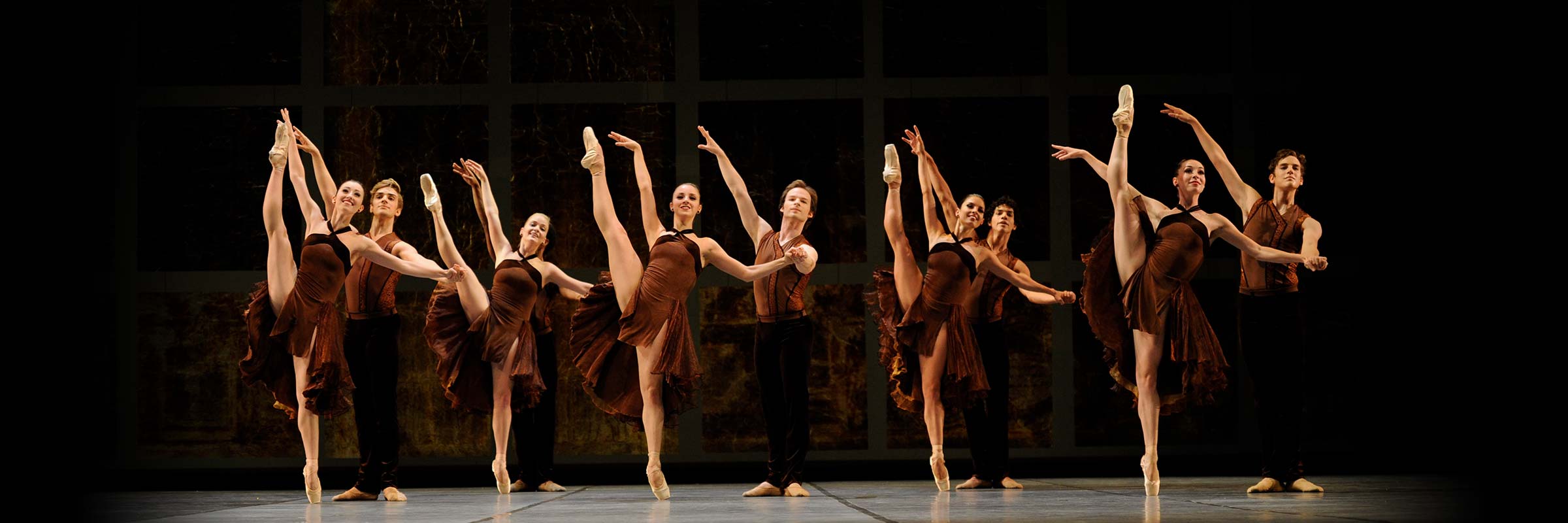About Tomasson’s Trio
Death, Love, and Remembrance
In Trio, San Francisco Ballet Artistic Director & Principal Choreographer Helgi Tomasson captures the energy, momentum, and varied emotional tones of Tchaikovsky’s Souvenir de Florence. Created for the 2011 Repertory Season, Trio offers an aesthetic and emotional experience that’s as deserving of remembrance as any souvenir. It’s a visually rich triptych of a ballet, with sets and costumes as lush as the choreography.

Peter Ilyich Tchaikovsky (1840–93) wrote only five chamber compositions, and his sublimely danceable Souvenir de Florence was his first attempt at a string sextet. He wrote it in 1890, describing the process in a letter to his brother as “unimaginably difficult.” He revised it in 1892 and it premiered late that year. He titled the piece for its point of origin, Florence, where he wrote the first two movements. But he finished it in Russia, a change of location that’s audible in the Slavic undertones of the last two movements. They “have a different flavor” than the first two, says Tomasson, adding that Music Director & Principal Conductor Martin West told him they should be played as one. So a quartet of musical movements became, instead, a trio.
Souvenir de Florence is inarguably glorious. Tomasson first heard the piece 30 years ago at New York City Ballet, and as a choreographer, he responded to the score’s drama and richness. Because he hadn’t heard the music in many years, he remembered it as “one thing from beginning to end. And of course I discovered almost immediately that it wasn’t.” The three-part structure posed an immediate question: should he connect the movements? The more he thought about that idea, he says, the less he liked it. “I kept coming back to the title, Souvenir.” The word connotes “images or remembrances,” he says, of three discrete occasions.

The next question was how to interpret each of those musical “occasions.” For the first, an allegro (fast and spirited), Tomasson sends a principal couple and five corps couples soaring through choreography that’s dynamic, elegant, and playful. The second movement, the adagio, is ballet’s traditional home for the slow, romantic pas de deux. But the length (more than nine minutes) and depth of this adagio made Tomasson think beyond the traditional love duet. “It has a certain sadness about it, a feeling of inevitability,” he says. “The first part is very longing and revealing, and it gets interrupted with those staccato violins, almost ghostlike. There’s some eeriness going on.” When the melody repeats, he says, “it’s deeper, sadder. Something has happened.”
So after beginning the adagio with a pas de deux, Tomasson segues into a dance for three. A solo man, a figure of death, lets an embracing couple dance their declaration of love, then wages gentle battle for possession of the woman. Tomasson says he doesn’t see her fighting death. “She accepts it,” he says. “It’s like death is stronger than love.”

The music for the third dance movement is “very Russian sounding, but not overpowering,” says Tomasson. So he took a subtle approach, working in what he describes as “Russian motif steps” that draw on character dance. Near the end the music builds again. “It gets very joyous, fast, and exciting,” he says.
The word “souvenir” might suggest something with little more meaning than a postcard. But Tomasson works with the weightier concept of remembrance, investing Trio with the resonance of his childhood impressions of Tchaikovsky’s brilliant music. The result is a ballet that matches the score in explosiveness, drama, and emotional intensity.
by Cheryl A. Ossola
THIS PRODUCTION WAS PART OF THE 2022 SEASON
Header Image: San Francisco Ballet in Tomasson’s Trio // © Erik Tomasson








